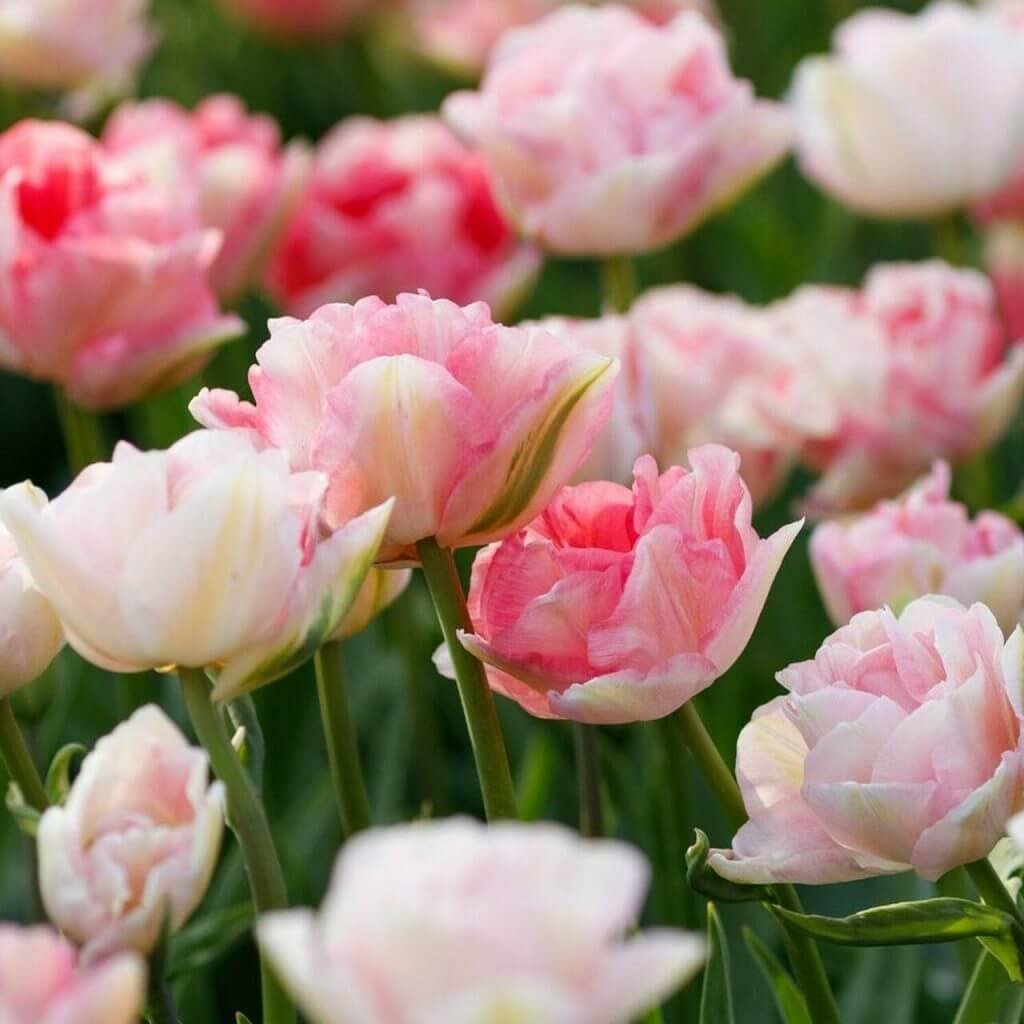How to Grow, Cut and Condition Tulips
Tulips have been stealing the hearts of gardeners and florists for centuries. Their bold, brilliant blooms light up the spring garden with color, and a vase of tulips will fill your home with freshness, beauty, and cheer.

How to Plant Tulips for Cut Flowers
The best way to grow tulips specifically for cutting is to plant the bulbs in trenches that are 6-7" deep and 2-4 feet wide (wider than 4 feet makes it difficult to reach into the center of the bed to harvest). These dedicated planting areas can be located in a cutting garden, vegetable garden, or raised beds. Planting in trenches in quick, and you can fit lots of bulbs in a relatively small space.
Plant the tulip bulbs closely together -- as if you are filling an egg carton -- with the bulbs almost touching. Backfill the area with soil, and water well if the soil is dry. If you have had trouble with squirrels digging up your bulbs, cover the planting area with chicken wire or hardware cloth and secure it to the ground with landscape staples or rocks. Remove the wire in spring when green shoots begin to emerge.


How to Harvest Tulips
Gardeners and flower farmers who grow tulips for cutting, usually treat them as annuals and plant fresh bulbs each fall. If you want to try for a second year of blooms, you'll need to cut short stems and leave at least 2-3 leaves behind so the foliage can replenish the bulb's energy. Even so, be aware that first year flowers are usually significantly larger than flowers produced the second or third year.

The bud in the circle is the correct size for harvesting.
For the longest vase life, single tulips should be harvested in bud stage when the color is evident but before the bloom is completely colored. Wait a bit longer to harvest parrot and double tulips. Their buds should be fully colored, but not yet open.

The correct stage for harvesting parrot and double tulips.
When harvesting tulips, it's best to pull the stems rather than cut them. Reach down to the base of the stem and pull out the entire plant with the bulb attached. This technique will give you an additional 5-6 inches of stem length. Removing the bulb also immediately frees up the planting area so you can turn around and fill it with another crop.

Post-Harvest Handling
Unless you are planning to use the stems immediately after harvest, leave the bulbs attached and store the tulips in a cooler set at 35°F. Stand them upright or bunch and wrap the stems in paper to keep them straight during storage. When you are ready to arrange your tulips, cut off the bulbs and rehydrate the stems in water. Leave the stems wrapped in paper while rehydrating.
Tulip stems continue to lengthen after harvest. When working them into an elaborate design, anticipate the stems growing and sink the flowers deeper into the vessel. Adding floral preservative to the water will extend the tulips vase life and help maintain their vibrant color.
Lastly, heavy-headed tulips have a tendency to bend downward after harvest. You can solve this problem by puncturing the top of the stem right below the bloom with a needle. This slows cellular division and will keep the heads from drooping.

Best Tulip Varieties for Cutting
When selecting tulips for cutting, choose varieties that are at least 16 inches tall. Longer stems are more valuable (if you are selling the flowers) and more versatile if you are using them yourself. Here are some of the most popular varieties for cutting.
Exotic Emperor - This gorgeous tulip is an elegant, early bloomer with layers of creamy white petals that are brushed with lime green highlights. As the blossoms mature, they open wider each day to reveal a golden yellow center.

Apricot Delight - This Darwin Hybrid's thick, ivory petals are brushed with rose, pale pink and peach. The big, long-lasting flowers are held high on strong, weatherproof stems.

Angelique - Angelique's lovely soft pink, fragrant blooms have the same romantic charm as a peony. It's been one of the world's most popular tulip varieties for 60 years running and holds an Award of Garden Merit from England's Royal Horticultural Society. Finola is similar and equally beautiful.

Black Hero - Who wouldn’t love a 20-inch, deep purple tulip with layer upon layer of satiny petals? Black Hero adds drama to any spring garden and this double version of Queen of Night is reliable and long blooming.

Carnaval De Nice - This classic, late-blooming tulip has stood the test of time and captured generations of admirers. Scarlet red stripes adorn the cupped white petals, and on sunny days the petals open wide to reveal a lemon-yellow center.

Order Early for Best Selection
Tulips may be pre-ordered starting in April, for fall delivery at the proper planting time in your growing zone. Reserving your favorites early is the only way to ensure you will get the varieties you want.
To see our complete selection of tulips click HERE. Be sure to check out our new Planning Guide for Tulips, as well as some of these popular articles on our website: All About Tulips, 7 Tips for Planting Tulips, and What Makes Darwin Hybrid Tulips Special.
